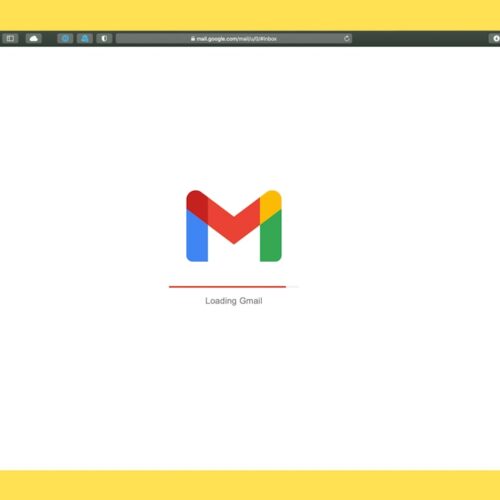Email marketing is a powerful tool that businesses can use to communicate with their customers and prospects. It involves sending targeted messages via email to a specific audience, with the goal of driving engagement, building relationships, and ultimately, increasing sales. However, manually managing email marketing campaigns can be time-consuming and inefficient. This is where automation comes in.
Email marketing automation refers to the use of software and technology to automate various aspects of the email marketing process. It allows businesses to streamline their email marketing efforts, saving time and increasing efficiency. With automation, businesses can set up triggers and workflows that automatically send emails based on specific actions or events, such as a customer making a purchase or signing up for a newsletter.
Key Takeaways
- Email marketing automation is the use of software to automate email campaigns and improve efficiency.
- Automation is important in email marketing because it saves time, increases revenue, and improves customer engagement.
- Benefits of automated email campaigns include increased open and click-through rates, improved segmentation, and personalized content.
- To implement automation in email marketing, businesses should choose the right software, define goals and metrics, and create a content strategy.
- Types of automated email campaigns include welcome emails, abandoned cart emails, and re-engagement emails.
Understanding the Importance of Automation in Email Marketing
Manual email marketing can be a daunting task for businesses. It requires manually creating and sending emails, managing subscriber lists, tracking responses, and analyzing data. This can be time-consuming and prone to human error. Automation helps overcome these challenges by automating repetitive tasks and streamlining the entire process.
According to a study by Epsilon, automated email messages have an open rate that is 70.5% higher than non-automated emails. This shows that automation can significantly increase engagement with email campaigns. Additionally, automated emails generate 320% more revenue than non-automated emails, according to a study by DMA. These statistics highlight the importance of automation in email marketing.
Automation also allows businesses to personalize their email campaigns at scale. With automation software, businesses can segment their audience based on various criteria such as demographics, purchase history, or engagement level. This enables businesses to send targeted and relevant emails to different segments of their audience, increasing the chances of conversion.
Benefits of Automated Email Campaigns
Automated email campaigns offer several benefits for businesses. Firstly, they help increase engagement with customers and prospects. By sending timely and relevant emails based on specific triggers, businesses can capture the attention of their audience and encourage them to take action. For example, a welcome email sent immediately after a customer signs up for a newsletter can help establish a connection and build trust.
Automated email campaigns also have the potential to increase revenue for businesses. By sending targeted emails to customers who have shown interest in a particular product or service, businesses can drive conversions and sales. For example, an abandoned cart email sent to a customer who has added items to their cart but not completed the purchase can help recover lost sales.
Several businesses have successfully implemented automated email campaigns to achieve their marketing goals. For example, clothing retailer J.Crew saw a 775% increase in revenue from segmented email campaigns. Similarly, online retailer Amazon uses automated emails to recommend products based on customers’ browsing and purchase history, resulting in increased sales.
How to Implement Automation in Email Marketing
| Step | Description |
|---|---|
| 1 | Identify the tasks that can be automated in your email marketing strategy. |
| 2 | Choose an email marketing automation tool that suits your needs and budget. |
| 3 | Create a workflow or series of automated emails based on your customer journey. |
| 4 | Personalize your automated emails with dynamic content and segmentation. |
| 5 | Test and optimize your automated emails to improve their performance. |
| 6 | Monitor and analyze the results of your automated email campaigns to make data-driven decisions. |
Implementing automation in email marketing involves several steps. Firstly, businesses need to choose the right email marketing automation software that suits their needs. There are several options available in the market, each with its own features and capabilities. It is important to consider factors such as ease of use, integration with other systems, and scalability when choosing a software.
Once the software is chosen, businesses need to set up their email campaigns and workflows. This involves creating email templates, setting up triggers and actions, and defining the target audience for each campaign. It is important to carefully plan and map out the customer journey to ensure that the right emails are sent at the right time.
Businesses should also focus on personalization and segmentation when implementing automation in email marketing. By segmenting their audience based on various criteria such as demographics, purchase history, or engagement level, businesses can send targeted and relevant emails that resonate with their audience. Personalization can also be achieved by using dynamic content in emails, such as personalized product recommendations or personalized subject lines.
Types of Automated Email Campaigns
There are several types of automated email campaigns that businesses can implement to engage with their audience and drive conversions. One common type is the welcome email campaign, which is sent to new subscribers or customers. This email introduces the business, sets expectations, and provides valuable information or offers. A well-crafted welcome email can help establish a connection with the audience and encourage them to take further action.
Another type of automated email campaign is the abandoned cart email campaign. This is sent to customers who have added items to their cart but not completed the purchase. The email typically includes a reminder of the items in the cart, along with an incentive or offer to encourage the customer to complete the purchase. Abandoned cart emails have been proven to be effective in recovering lost sales and increasing revenue.
Other types of automated email campaigns include re-engagement campaigns, which are sent to inactive subscribers to encourage them to re-engage with the business, and post-purchase campaigns, which are sent to customers after they make a purchase to thank them and provide additional offers or recommendations.
Several businesses have successfully implemented automated email campaigns to achieve their marketing goals. For example, clothing retailer J.Crew saw a 775% increase in revenue from segmented email campaigns. Similarly, online retailer Amazon uses automated emails to recommend products based on customers’ browsing and purchase history, resulting in increased sales.
Best Practices for Creating Automated Email Campaigns

Creating effective automated email campaigns requires careful planning and execution. Here are some best practices to keep in mind:
1. Personalization: Personalize your emails by using dynamic content and personalization tokens. Address your subscribers by their name and tailor the content of your emails based on their preferences or behavior.
2. Segmentation: Segment your audience based on various criteria such as demographics, purchase history, or engagement level. This allows you to send targeted and relevant emails that resonate with your audience.
3. Timing: Pay attention to the timing of your emails. Send emails at the right time based on specific triggers or events. For example, send a welcome email immediately after a customer signs up for a newsletter, or send an abandoned cart email within a few hours of the customer leaving the website.
4. Testing and optimization: Continuously test and optimize your email campaigns to improve their effectiveness. Test different subject lines, email designs, and calls to action to see what resonates best with your audience. Analyze the results and make data-driven decisions to optimize your campaigns.
Measuring the Success of Automated Email Campaigns
Measuring the success of automated email campaigns is crucial for understanding their effectiveness and making data-driven decisions. Here are some key metrics to track:
1. Open rate: The open rate measures the percentage of recipients who opened your email. A high open rate indicates that your subject line and sender name are compelling and relevant to your audience.
2. Click-through rate: The click-through rate measures the percentage of recipients who clicked on a link in your email. A high click-through rate indicates that your content and call to action are engaging and compelling.
3. Conversion rate: The conversion rate measures the percentage of recipients who completed a desired action, such as making a purchase or signing up for a webinar. A high conversion rate indicates that your email campaign is effective in driving conversions.
4. Unsubscribe rate: The unsubscribe rate measures the percentage of recipients who unsubscribed from your email list after receiving an email. A high unsubscribe rate may indicate that your emails are not relevant or valuable to your audience.
Analyzing these metrics can provide valuable insights into the effectiveness of your email campaigns and help you make data-driven decisions to optimize them.
Common Mistakes to Avoid in Automated Email Campaigns
While automated email campaigns offer many benefits, there are some common mistakes that businesses should avoid:
1. Sending too many emails: Bombarding your subscribers with too many emails can lead to email fatigue and result in unsubscribes. Be mindful of the frequency of your emails and ensure that they provide value to your audience.
2. Not personalizing emails: Personalization is key to engaging with your audience. Avoid sending generic emails that do not resonate with your subscribers. Use personalization tokens and dynamic content to tailor your emails based on individual preferences or behavior.
3. Neglecting testing and optimization: Testing and optimizing your email campaigns is crucial for their success. Continuously test different elements of your emails, such as subject lines, email designs, and calls to action, and analyze the results to make data-driven decisions.
4. Not monitoring email deliverability: Email deliverability refers to the ability of your emails to reach the recipients’ inbox. Neglecting email deliverability can result in your emails being marked as spam or not being delivered at all. Monitor your email deliverability and take necessary steps to improve it.
By avoiding these common mistakes, businesses can ensure that their automated email campaigns are effective in engaging with their audience and driving conversions.
Future of Email Marketing Automation
The future of email marketing automation looks promising, with advancements in technology such as artificial intelligence (AI) and machine learning (ML) playing a significant role. AI and ML can help businesses further personalize their email campaigns and improve their effectiveness.
For example, AI-powered algorithms can analyze large amounts of data to identify patterns and trends in customer behavior. This can help businesses understand their audience better and send more targeted and relevant emails. AI can also be used to automate the process of creating personalized content, such as product recommendations or subject lines.
Machine learning algorithms can continuously learn from customer interactions and optimize email campaigns in real-time. For example, ML algorithms can analyze open rates, click-through rates, and conversion rates to identify the most effective elements of an email campaign and make data-driven decisions to improve its performance.
Leveraging the Power of Automation for Effective Email Campaigns
In conclusion, email marketing automation offers several benefits for businesses. It helps save time and increase efficiency by automating repetitive tasks and streamlining the entire email marketing process. Automated email campaigns can increase engagement with customers and prospects, drive conversions and revenue, and improve the overall effectiveness of email marketing efforts.
By implementing automation in email marketing, businesses can personalize their emails at scale, segment their audience based on various criteria, and send targeted and relevant emails that resonate with their audience. It is important to follow best practices such as personalization, segmentation, and testing to create effective automated email campaigns.
The future of email marketing automation looks promising, with advancements in AI and ML technology. Businesses can leverage these technologies to further personalize their email campaigns and improve their effectiveness.
In conclusion, businesses should leverage the power of automation for more effective email campaigns. By implementing automation in email marketing, businesses can save time, increase efficiency, and achieve their marketing goals.
If you’re looking to optimize your email marketing strategy, you won’t want to miss out on the article “The Power of Automated Email Campaigns” on SolveCopy’s blog. This insightful piece dives deep into the benefits and best practices of using automated email campaigns to engage your audience and drive conversions. Whether you’re a seasoned marketer or just starting out, this article is a must-read for anyone looking to take their email marketing to the next level. Check it out here.


